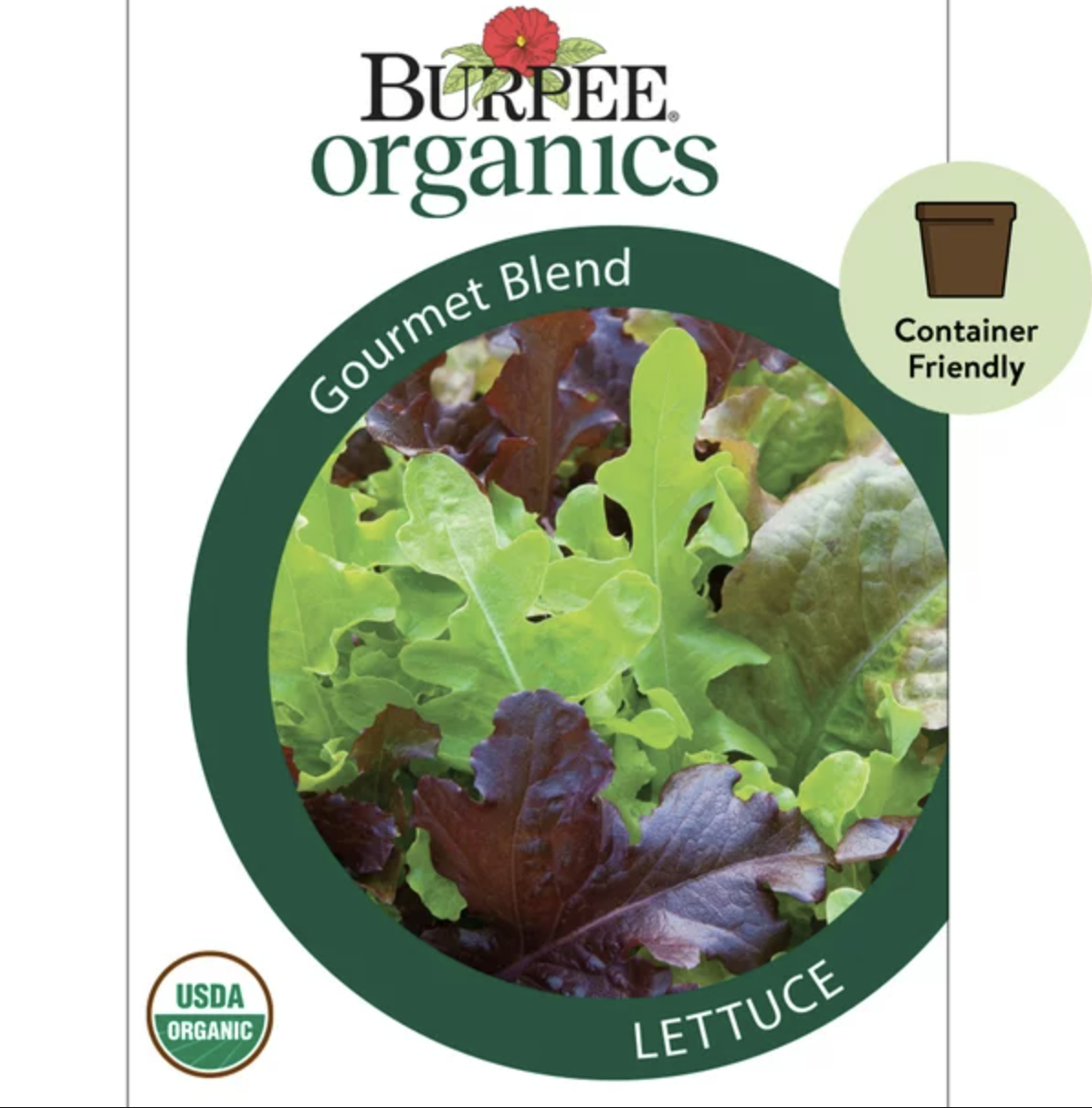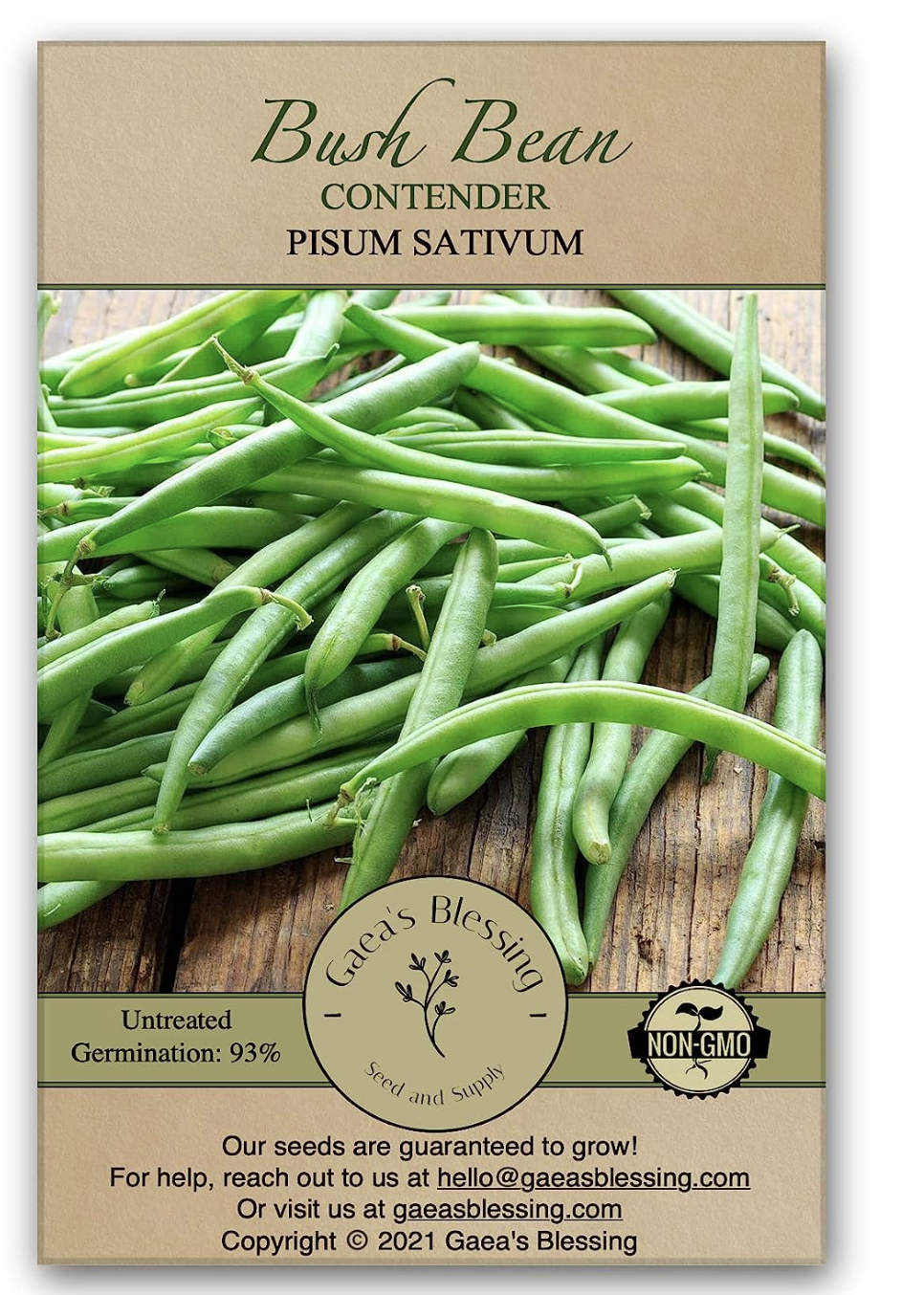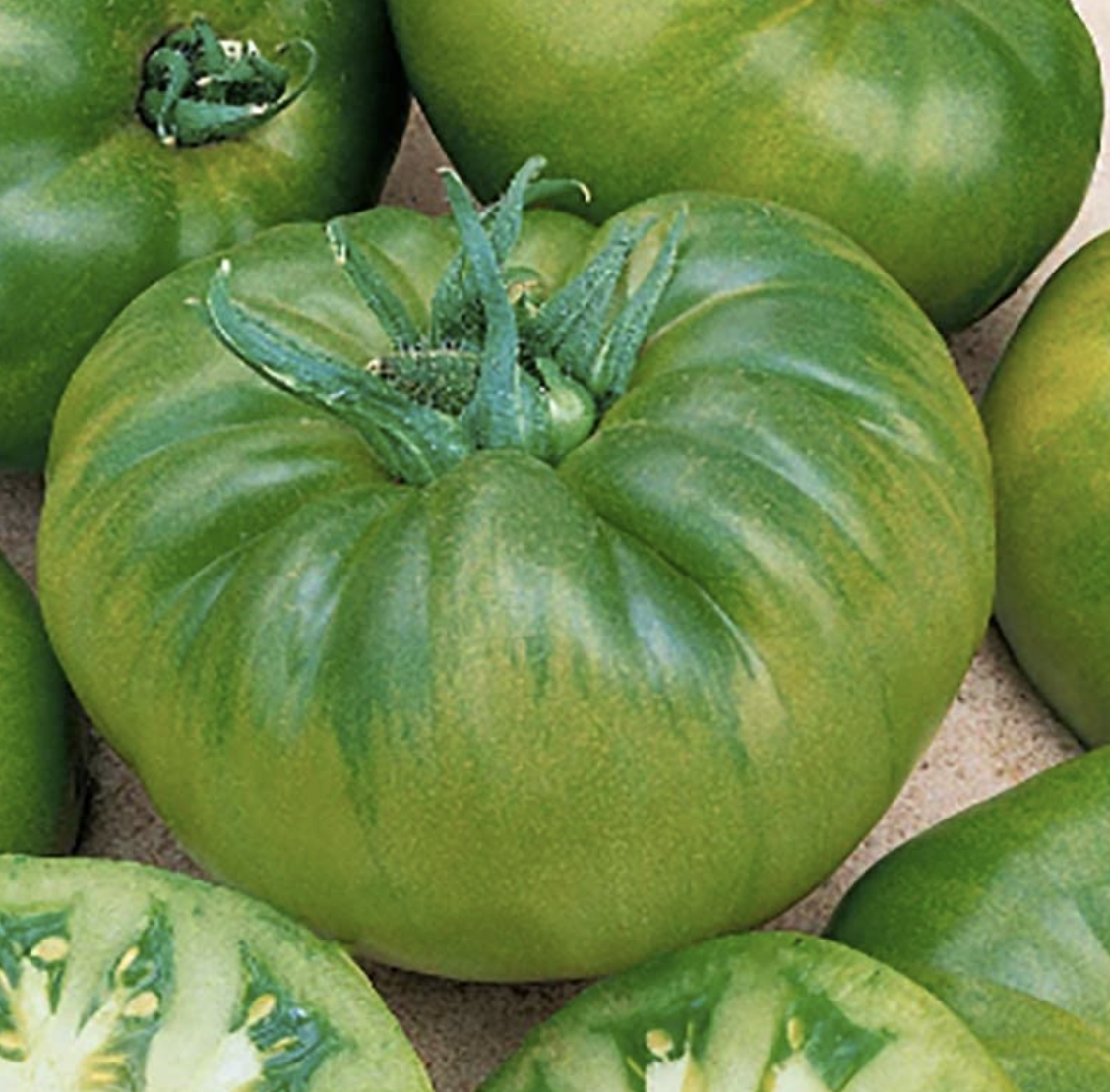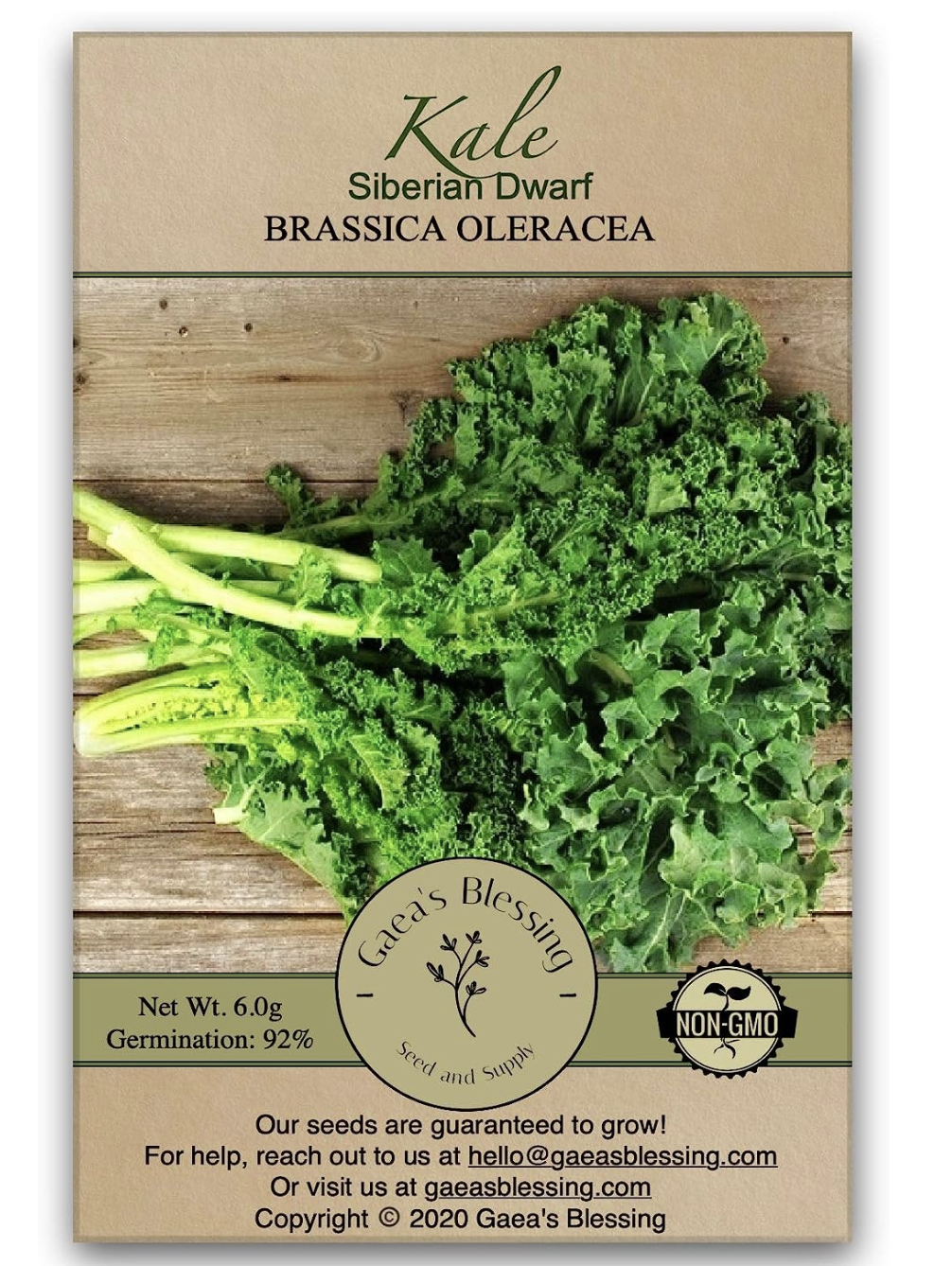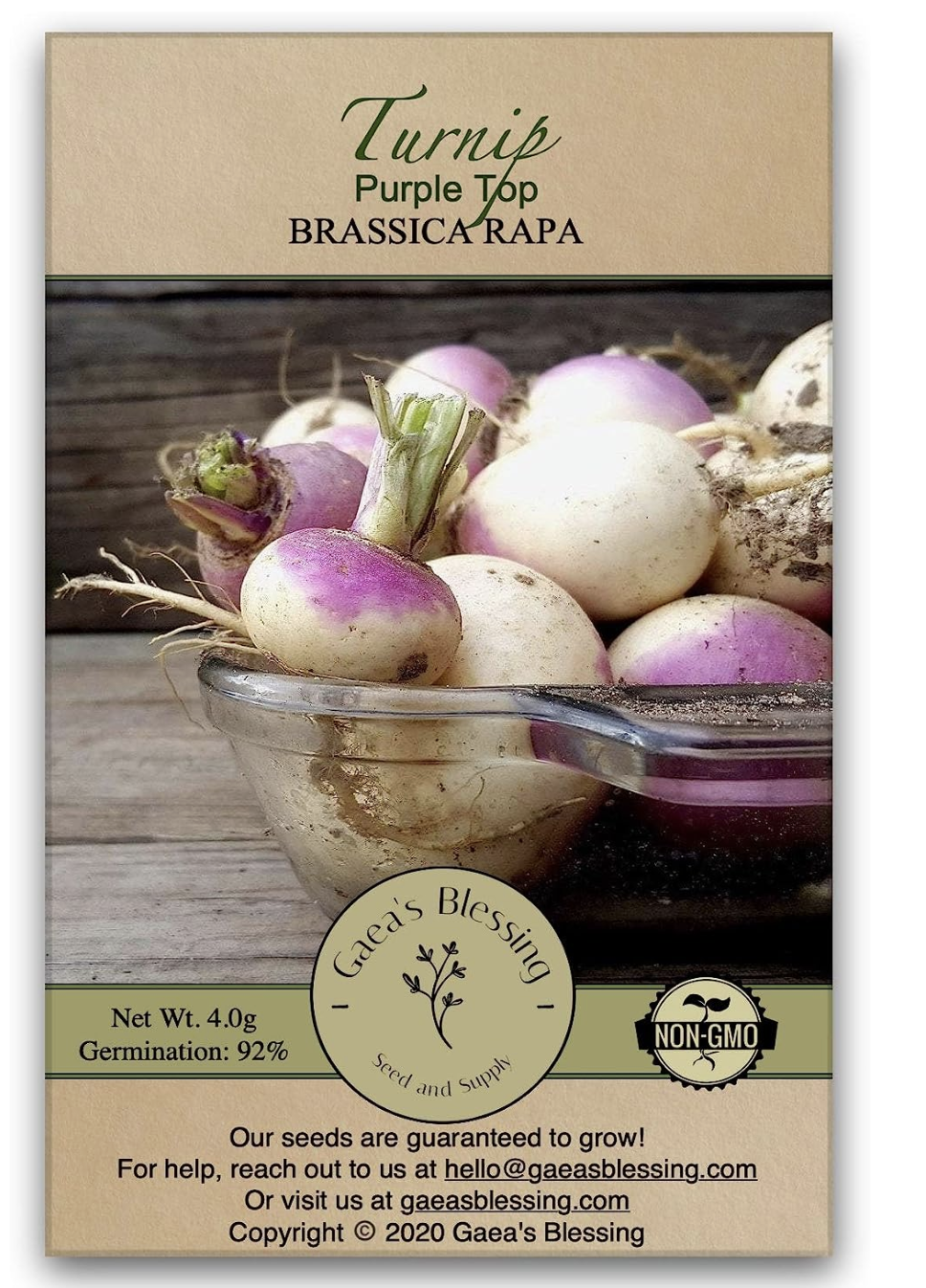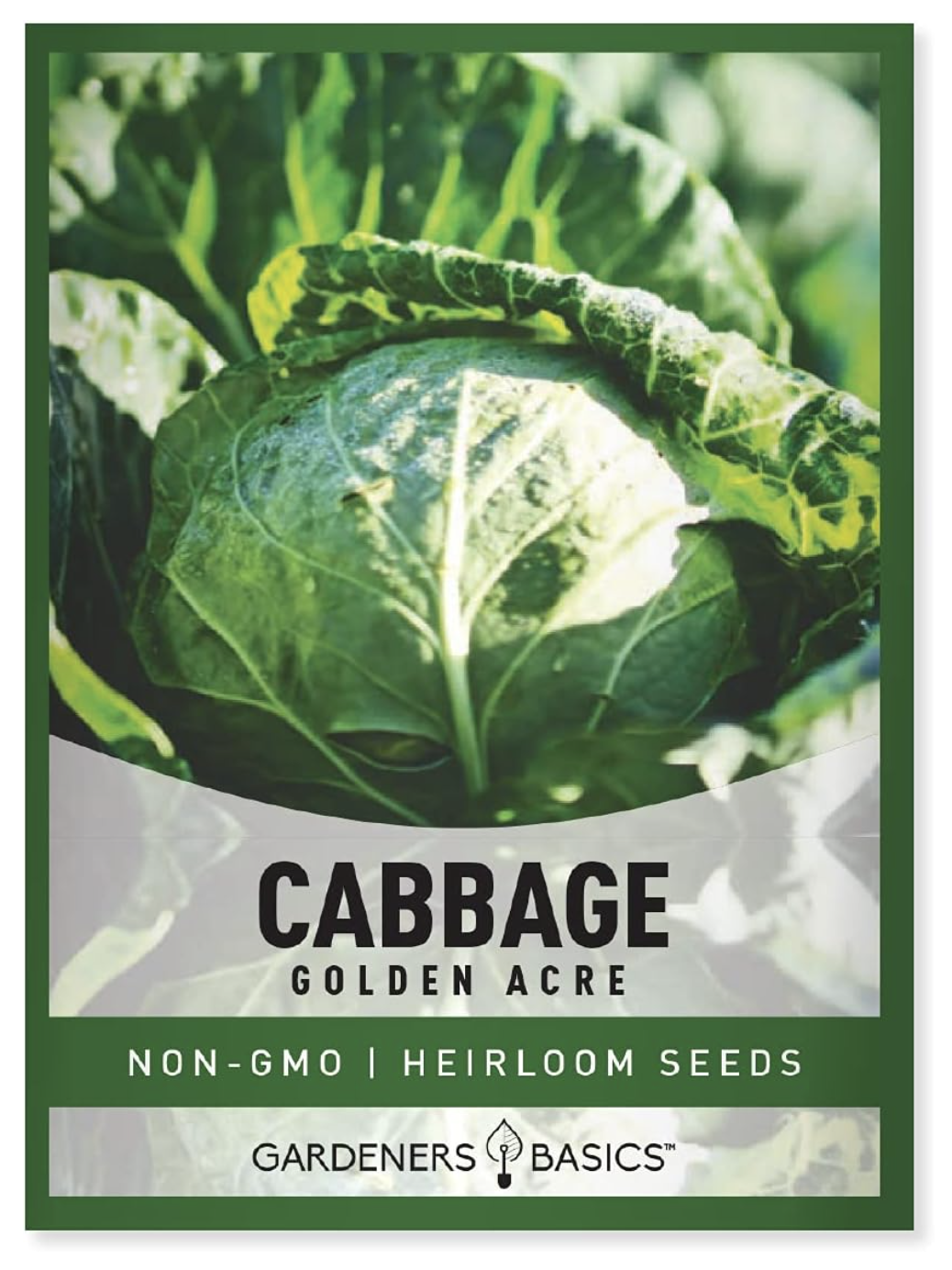'It's not too late!' These are the vegetables you can plant in July to be eating from your backyard by fall
Want to get planting up your veg plot but not sure if it's too late? Actually, July can be a great month for sowing loads of different veg


The later summer months are all about enjoying your backyard. It's looking at its best after all that hard work earlier in the year. Those dark evenings and chilly days spent out pruning, digging over beds, and finding the perfect spot for plants that are now flourishing. But, as any avid gardener will know, there is always more to be done, and July, with its long warm days, can be the perfect month for planting up veg.
You see, it's not too late! There is still plenty of produce that you can sow from seed in July into your vegetable garden. As well as veg that you can plant now and harvest over the fall and winter (carrots, cabbages, turnips), there are vegetables that you can sow now and enjoy over the rest of the summer too. Salad leaves and leafy green veg for example are easy wins.
The best vegetables to plant in July
If you want to be living the good life both over the summer and into the autumn and winter months, these are the veggies to get planting now (plus some expert tips on how to care for them).
1. Lettuce and salad leaves

The great thing about lettuce, and most salad leaves, is that it doesn't take ages to reap the rewards. You could plant up the seeds and have lettuce on your table in just a few weeks. And they can be planted in July if you give them the right attention (i.e. lots of watering). Plus, they are the perfect vegetable to grow for beginners.
'Lettuce is a popular leafy green vegetable known for its crisp texture and mild flavor. It comes in various forms, including romaine, iceberg, and butterhead. Lettuce is highly versatile and can be used in salads, sandwiches, and wraps,' says Reese Robbins, founder of Just Pure Gardening.
'To plant lettuce in July, choose a location with partial shade to protect it from the intense summer heat. Sow the seeds directly into well-drained soil that has been amended with compost. Plant them about half an inch deep and keep them evenly spaced. Water the seeds gently to avoid displacing them.'
'Lettuce plants require regular watering to keep the soil consistently moist. Mulching around the plants can suppress weeds and retain moisture. Thin out the seedlings once they have a few leaves, leaving adequate space for each plant to grow. And protect the lettuce from pests like slugs and snails using organic pest control methods or physical barriers,' adds Reese.
The Livingetc newsletters are your inside source for what’s shaping interiors now - and what’s next. Discover trend forecasts, smart style ideas, and curated shopping inspiration that brings design to life. Subscribe today and stay ahead of the curve.
2. Carrots

Outdoor growing season for carrots is May-July (the earlier in July you get them in the better). And, depending on the variety, you should be able to harvest them in as little as ten weeks.
'Carrots will still give you a crop in late summer. Choose the smaller round or chantenay varieties which will mature quicker than the large varieties. Do watch out for carrot root fly and either grow in containers or cover with a cloche of horticultural fleece,' suggests Angela.
Reese adds that 'Carrots prefer loose, sandy soil that allows their roots to grow straight and deep. Sow carrot seeds thinly, about half an inch deep. It is important to space the seeds properly to allow the carrots enough room to develop. Once they emerge, you can thin out the seedlings, leaving a few inches of space between each plant. Thinning promotes proper root development and reduces competition among the carrots.'
Carrots can also make for great vegetables to grow in pots and containers. Reese suggests 'using raised beds or containers for growing carrots, especially if your soil has heavy clay or rocks. Raised beds provide better drainage and control over the soil quality, while containers offer flexibility for gardeners with limited space.'
3. Radishes
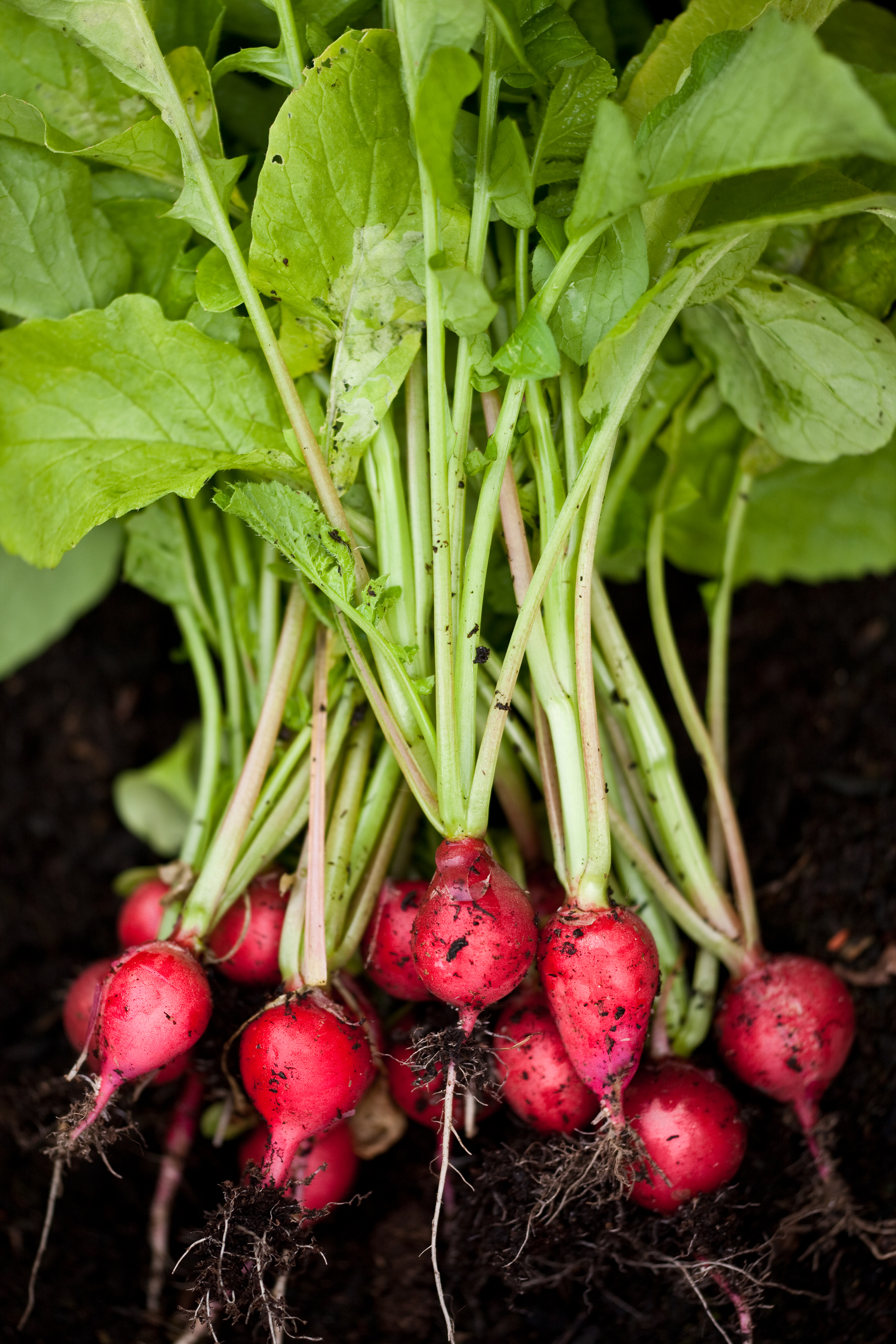
A big plus of radishes is that they grow quickly, they could be ready to harvest in just six weeks. And of course, their delicious spicy flavor and gorgeous vivid color make them a perfect addition to late summer salads. And they work well in a vegetable container garden too.
'Radish are quick and easy to grow so again, these can be sown at three weekly intervals to give a good long cropping season. They like it cool so sow in a spot out of the midday sun or in the shade of another taller crop,' says Angela.
'For July planting, choose a location with full sun or partial shade. Sow radish seeds directly into the soil, about half an inch deep and 1-2 inches apart. Radish seeds are relatively large, making them easy to handle. Ensure even distribution of seeds, and cover them with soil,' adds Reese.
'Once the seedlings have a few leaves, thin them out to provide enough space for proper root development. Leave 3 to 4 inches between each plant to ensure they have room to grow. Consider successive plantings of radishes every 10 to 14 days for a continuous harvest throughout the rest of the season. This way, you can enjoy a fresh supply of radishes at different stages of maturity.'
4. Dwarf french beans

Not only satisfying to pick, and delicious to eat, French beans are a beautiful plant in their own right. Dwarf varieties are better suited to a small backyard as they don't need to be staked and won't climb too tall. Plant them up in July and you should have a bounty by the early autumn.
'Dwarf French beans and runner beans can still be sown outdoors in July in a sunny location. They can both be grown in containers, but they need to be big enough and you have to be especially vigilant about watering. Consider watering both in the morning and the evening,' advises Angela.
'When planting in July, choose a sunny location with well-drained soil. Remove any weeds or rocks that may obstruct root development. Sow the bean seeds directly into the ground, about 1-2 inches deep and 3-4 inches apart. Water the bean plants regularly, especially during dry spells, to promote healthy growth and prevent the soil from drying out. And monitor for common bean pests like aphids or bean beetles. Introducing beneficial insects to protect your plants,' says Reese.
'Regularly harvest the bean pods when they reach the desired size and are tender. Harvesting the beans encourages further production and ensures the best flavor and texture.'
5. Beetroots
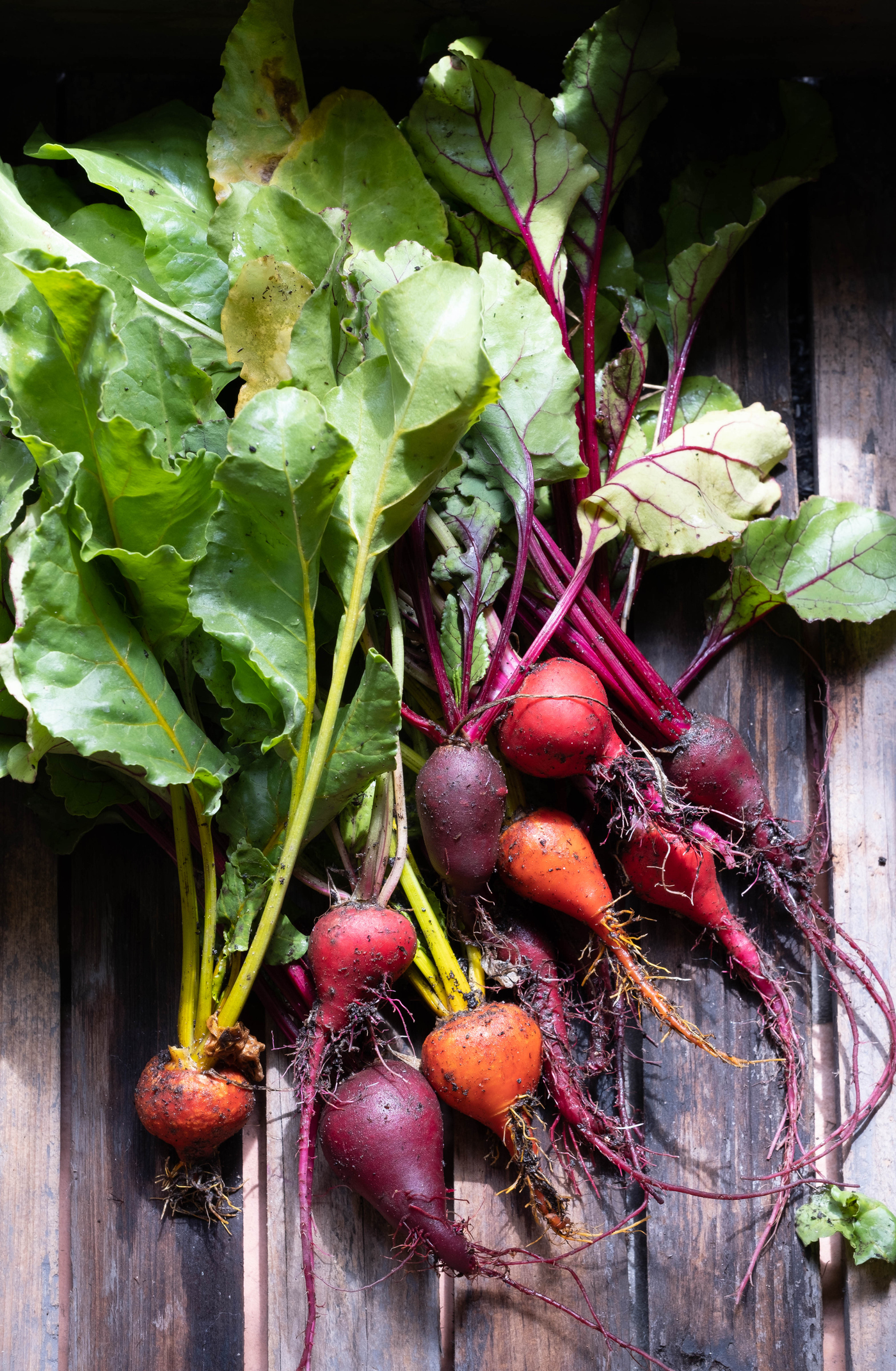
Again, the perfect veg for summer salads and cozy autumn dishes. You can serve up raw, boiled or roasted and it's always delicious. Plus, that vibrant pink color is bound to add something to a dish. You can sow seeds in July, and expect to be able to harvest throughout the autumn months. They're so easy that they're even vegetables you can grow indoors all year.
'Beetroot 'Boltardy' is an absolute must for summer planting,' says renowned grower Sarah Raven. 'A favorite sweet variety, which has provided me with the bulk of my beetroot and baby salad leaves for years. Sow your seeds thinly in rows with a row gap of 12 inches, or sow in blocks, and thin to 2 inches. Don't water unless soil is very parched, as over-watering encourages leaf at the expense of root.'
'For planting beets in July, choose a sunny location with loose, well-drained soil. Sow the beet seeds directly into the ground, about half an inch deep. Thin out the seedlings once they have a few leaves, leaving 4 to 5 inches of space between them for the beets to develop,' suggests Reese.
'Beets require consistent moisture, so water them regularly to prevent the roots from becoming woody or bitter. And mulch around the plants to retain the moisture in the soil and control weeds. Monitor for pests like leaf miners. These pests are going to damage only leaves. If you are not going to eat leaves and grow beetroot only for their root, you don't need to worry about leaf miners.'
6. Green tomatoes

If you want to grow tomatoes in containers from seed, the best time to get them sown is between February and April. However, as with lots of veg you can cheat a bit later in the year and buy small plants that will produce fruit way into the summer. Not all tomatoes will thrive at this time of year if you are just planting them up now, but green tomatoes will be your best bet.
'Young veg plants may still be available in your local garden center so they are worth giving a go and hope for an Indian summer to ensure the best possible result,' suggests Angela. 'I would tend to avoid chillies, aubergines, and certain tomatoes as they all need a long hot growing season. However, if you like green tomato chutney then give them a go. You may also get them to ripen by placing the fruit on a warm sunny windowsill.'
7. Leafy greens

Spinach, kale and chard are all veg you can plant in July and enjoy towards the end of the summer and into autumn.
'For planting over the summer months why not try, Swiss Chard,' suggests Sarah Raven. 'It has great flavor and looks wonderful with its chunky, white stems. Plus, it’s a hugely long producing and worthwhile plant to grow in your vegetable garden.'
'Use large containers with a drainage layer of crocks or stones in the bottom, and at least a foot of a rich and water-retaining, loam-based compost below the roots. This will survive winter frosts to keep producing through until spring, especially if protected with cloches or environmentally friendly fleece.'
Kale is also an easy green to grow in your veg patch. 'When planting kale in July, choose a location with full sun or partial shade. Sow kale seeds directly into well-drained soil, about half an inch deep. When seedlings appear, thin them out about 12-18 inches apart,' suggests Reese. 'Mulch around the plants. This will help retain moisture and suppress weed growth. And monitor for pests like cabbage loopers or aphids and use organic pest control methods to control them.'
8. Turnips

July is the perfect time to get planting your root veggies. The great thing about turnips is they have such a long harvesting period – lasting from late summer all the way through the winter. So while you can get the seeds in the ground in July, sow them throughout the summer months – little and often. They also have a really quick grow time, as little as six weeks. And you can eat the leaves too, so no waste, just treat them a bit like spinach.
'Sow turnip seeds directly into the prepared soil, about half an inch deep. Turnip seeds are relatively small, so it's important to distribute them evenly. When the seedlings come out, space them 2-3 inches apart,' is Reese's advice. 'Water the turnip seeds immediately after sowing to provide the moisture necessary for proper germination. Moisture is essential during the early stages of growth and keep the soil moist during dry periods.'
9. Winter cabbage

As the name would suggest, winter cabbage can be planted up in July and harvested throughout the deepest winter months. They are ideal for when nothing else is growing and add a touch of greenery to a winter garden.
'Winter cabbage is a leafy vegetable belonging to the Brassica family, known for its dense, tightly packed heads and crisp texture. It is a hardy variety that thrives in colder temperatures and is commonly used in salads, coleslaw, stir-fries, and various cooked dishes,' explains Reese.
'Choose a location with fertile, well-drained soil that gets a lot of sun. Remove weeds and debris from the soil. Then, sow the cabbage seeds about half an inch deep. Ensure that the soil is consistently moist but not soggy. Water the newly sown seeds gently but thoroughly to settle them in the soil and provide initial hydration. When seedlings emerge, space them to the recommended distance for the specific variety you're planting, typically 12-18 inches apart, to allow room for growth.'
10. Scallions

Super easy and quick to grow, scallions are perfect for beginners and really satisfying as you can pick them around eight weeks after sewing the seeds. And if you are tight on outdoor space you can grow them in window boxes.
'Scallions, or spring onions, are young onion plants with small bulbs and long, green shoots. They have a mild onion flavor and are commonly used as a garnish or in stir-fries, salads, and soups,' says Reese.
'In July, choose a location with full sun or partial shade for planting scallions. Scallions prefer well-drained soil enriched with organic matter. Sow scallion seeds directly into the prepared soil, about half an inch deep and 1-2 inches apart. Consider succession planting scallions every few weeks to ensure a continuous harvest throughout the growing season. This staggered planting allows for a fresh supply of scallions at different stages of maturity.'
'Harvest scallions when they have reached the desired size and before they start to bulb. Cut the green shoots just above the soil line, leaving the white base intact. Continual harvesting promotes new growth and allows for a longer harvest period.'

Formerly the Digital Editor of Livingetc, Hebe is currently the Head of Interiors at sister site Homes & Gardens; she has a background in lifestyle and interior journalism and a passion for renovating small spaces. You'll usually find her attempting DIY, whether it's spray painting her whole kitchen, don't try that at home, or ever-changing the wallpaper in her entryway. She loves being able to help others make decisions when decorating their own homes. A couple of years ago she moved from renting to owning her first teeny tiny Edwardian flat in London with her whippet Willow (who yes she chose to match her interiors...) and is already on the lookout for her next project.
